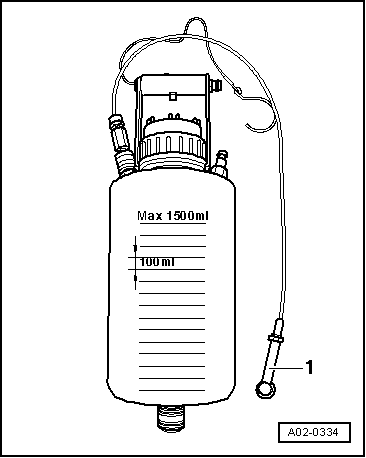
WARNING | t
| Brake fluid is hygroscopic, i.e. it retains humidity from the ambient air, and must therefore always be stored in airtight containers. |
| t
| Brake fluid must never come into contact with fluids containing mineral oils (oil, petrol, cleaning agent). Mineral oils damage the plugs and boots of the brake system. |
| t
| Drained (used) brake fluid must never be used again. |
| t
| Brake fluid is toxic, avoid skin contact. |
| t
| Because of its caustic effect brake fluid must not come into contact with paint. |
| t
| Rinse any brake fluid spills with a lot of water. |
| t
| Dispose of brake fluid in compliance with the applicable waste disposal and environmental regulations. |
| t
| Bleeding brake system on vehicles with ABS or TCS/ESP, as for vehicles without ABS. |
| t
| Only use new brake fluid in accordance with the specification → Chapter. |
| t
| While bleeding continuously check the brake fluid level in the brake fluid reservoir and top up brake fluid if necessary up to the „MAX“ marking. |
|

